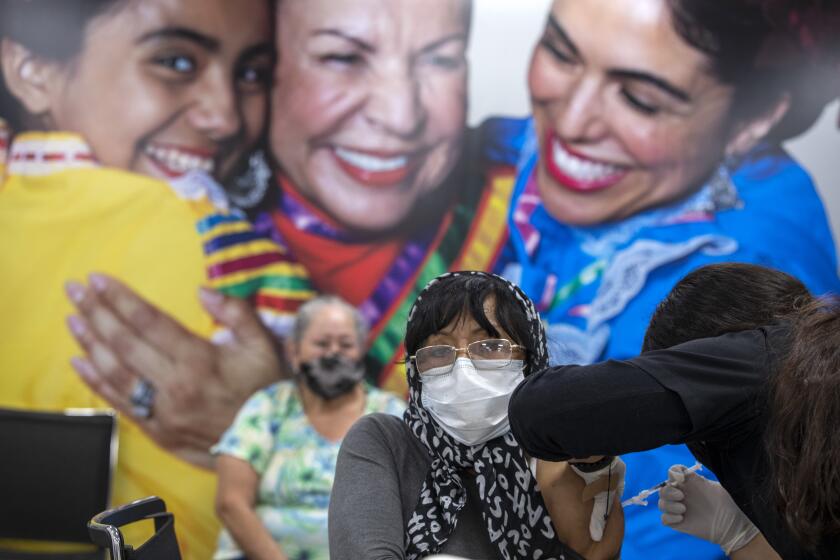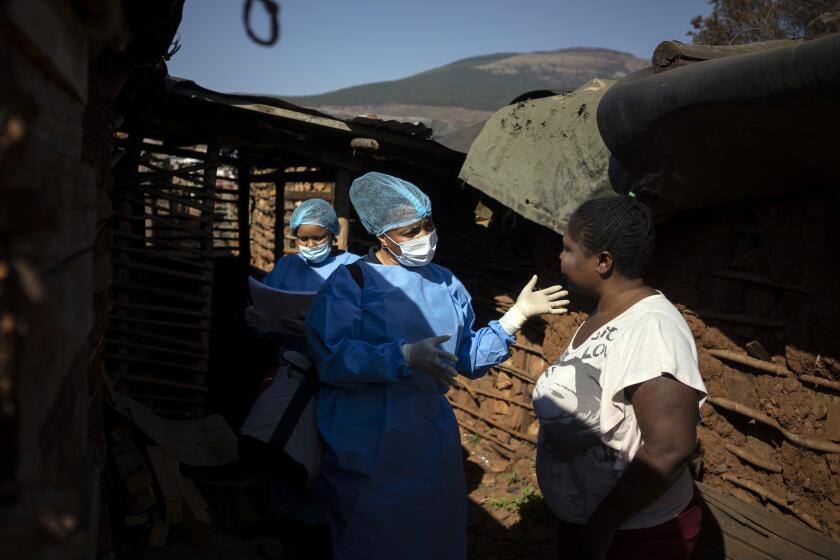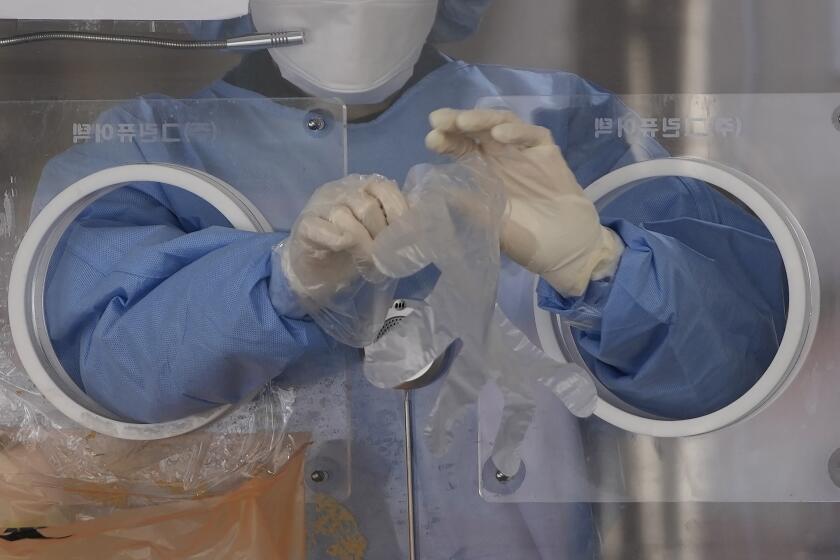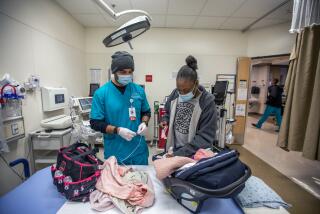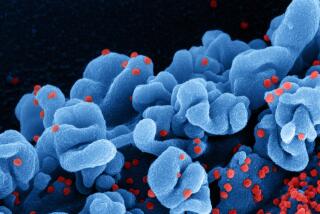Could humanity catch a break with Omicron?
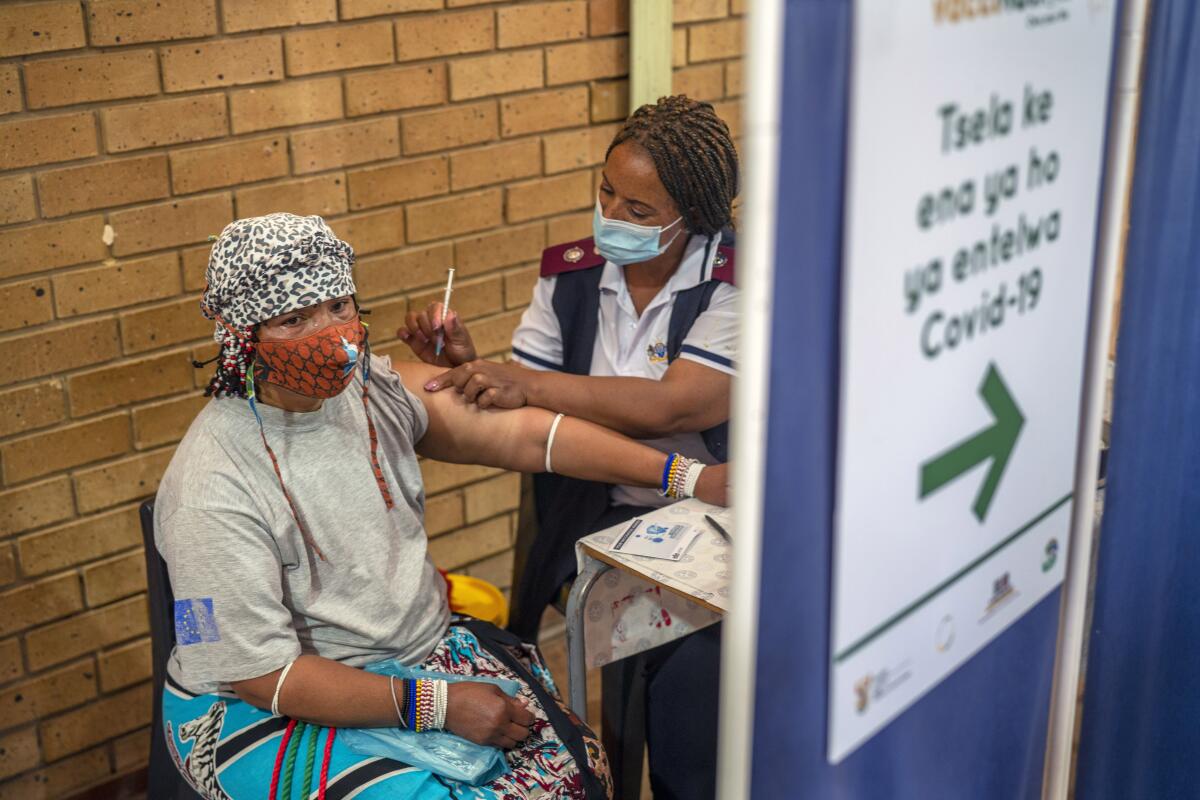
In the weeks since the Omicron variant made its presence known, scientists have braced themselves for yet another nasty surprise from a virus that has killed more than 5.3 million and sickened hundreds of millions more. But as they sort through preliminary data on the strain, they’re cautiously considering an unexpected possibility: that with Omicron, the coronavirus may finally be cutting humanity a little slack.
There’s still plenty of reason to worry: Omicron has spread to at least 77 countries, found its way to at least 35 U.S. states, and is on track to become the dominant strain in Europe by mid-January.
According to a raft of lab tests and population studies in South Africa, where Omicron is surging, the variant has cut deeply into the Pfizer-BioNTech vaccine’s ability to prevent new infections. And compared with Delta and other variants, it is much more likely to reinfect people who have already recovered from a bout with COVID-19.
At the same time, there are intriguing signs that with Omicron, the coronavirus has taken a turn for the milder.
South African adults infected during the Omicron surge were 29% less likely to be hospitalized for COVID-19 compared with their countrymen who were sickened during the first wave of cases there in the summer of 2020. And compared with past waves, adults hospitalized with Omicron were less likely to be admitted to the intensive care unit, or to need costly and intrusive levels of hospital care.
All of that suggests that in a world dominated by Omicron, the proportion of infected people who die could fall well below the 1% to 2% death rate that’s prevailed across much of the pandemic. Likewise, the surges in hospitalizations that have strained healthcare systems and exhausted medical professionals could be dampened.
If cases tended to be more mild and COVID-19 vaccines could still protect the most vulnerable people from dying, a kinder, gentler Omicron — even a highly contagious one — could be the break health officials and scientists have been waiting for.
“Is this the end of the pandemic?” Pieter Streicher, a coronavirus analyst at the University of Johannesburg, asked on Twitter.
Delta, so far, has been able to elbow out all other variants that otherwise might have spread more widely. Will that be the case with Omicron too?
In the South African province of Gauteng, where the first major run-up of Omicron infections was seen, new infections linked to the variant peaked at a level previously only achieved by Delta — and it got there much faster. Yet hospitalizations there are projected to be 25 times lower than would be expected with such a high infection rate, Streicher noted.
COVID-19 death rates across South Africa also have fallen precipitously despite the Omicron wave. If there is no massive surge in hospitalizations or deaths in the next two to three weeks, that “may well mark [a] turning point in [the] pandemic,” Dr. Shabir Madhi, an infectious-disease expert at the University of the Witwatersrand, wrote on Twitter.
A variant that combines high transmissibility with greatly reduced virulence would be welcomed by many scientists. If an infection with Omicron is unlikely to make a patient severely ill but leaves some immunity in its wake, it could act as a “natural vaccine,” said Dr. Bruce Walker, an immunologist and founding director of the Ragon Institute in Cambridge, Mass.
It could be the beginning of the end.
For now, it’s merely a glimmer of hope, and close to two years of experience have made scientists and health officials wary of assuming good news. But among the microbiologists, epidemiologists and evolutionary biologists who have pondered how the pandemic will end, a cluster of mutations that defang the virus’ ability to sicken while boosting its transmissibility has long been a favorite scenario.
Viruses are not as smart as humans, but they are much more patient. And the coronavirus’ track record suggests it won’t simply burn itself out.
Under these circumstances, the virus becomes an endemic “nuisance virus,” joining four other coronaviruses that have settled in among humans and are key causes of the common cold. They have assured their survival by producing mild illness and leaving just a little immunity in their wake. Once lodged in the upper airways of the respiratory system, the sniffles and coughs they generate ensure that infectious particles get spewed into the air and left behind on surfaces. But the mildness of those symptoms allows infected hosts to go to school, work, supermarkets, gyms and movie theaters, the better to spread their germs.
People exposed to these viruses over a lifetime build some natural immunity. But the limited immunity of most of the population ensures the viruses have a bounty of potential hosts year in and year out. The battle between pathogens and humanity reaches a state of stalemate.
“That’s what we all hope,” said Dr. Stanley Perlman, a University of Iowa virologist who has studied coronaviruses for decades.
But he said it’s way too early to know whether that hopeful scenario will pan out with Omicron.
“There have been so many twists and turns” during SARS-CoV-2’s two-year romp among humans, Perlman said. “We thought Delta was the end. We said to ourselves, ‘This is going to be the one that’s going to stay with us,’ and now that doesn’t seem to be true. But we all are hopeful.”
The Omicron variant was probably incubated in a person with poorly controlled HIV who struggled to clear a coronavirus infection.
Others were quicker to express doubt than acknowledge hope.
There are stark differences between South Africa and the United States that make it risky to rely too much on the early data. Mild COVID-19 is the overwhelming norm in South Africa because 73% of South Africans are younger than 40 (compared with 52% in the U.S.), an age group in which risks of severe disease are low. Just 16% of South Africans are older than 60 (compared with 23% here).
In addition, South Africa’s three waves of infections and its delayed access to vaccines have produced a population that’s been infected and reinfected many times. The resulting immunity is likely to make for milder cases more generally.
If Omicron does cause more mild disease, that’s only an improvement of degree. If the new variant makes only 10% of those infected severely ill with COVID-19 — cutting its virulence in half — that would seem to be a big win for humans.
But that gift could be erased by a big enough jump in the variant’s ability to spread. If Omicron is twice as transmissible as Delta, even a 50% reduction in virulence will be a wash. And if it’s more than twice as contagious, hospitals will begin to fill up fast.
Omicron’s impact on the COVID-19 pandemic will depend on a variety of factors that will take days to weeks for scientists to untangle.
“Even if it is milder — and I wouldn’t rule it out — the growth rate of Omicron, the sheer numbers of infections it is causing and how fast it is increasing mean that we are a long way” from the pandemic’s endgame, said William Hanage, an epidemiologist at Harvard’s School of Public Health.
If Omicron also erodes the protection of vaccines and readily reinfects COVID-19 survivors, that could be a further point in the virus’ favor.
The very preliminary reports from South Africa suggest that in the Omicron era, two doses of the Pfizer vaccine provided just 33% protection against infection and 70% protection against hospitalization — down from 80% and 93% in earlier months.
Even with reduced virulence, numbers like these could return million of vaccinated people to the pool of those vulnerable to becoming severely ill. That would give the virus the opportunity to claw back any advantage it may have yielded to humans.
While scientists cling to hope, they are keenly aware of the genetic curveballs the coronavirus could still throw. Even if it curbs its deadly ways and settles in for a long stay, its error-prone replication machinery is bound to keep generating mutations. And if Omicron is as transmissible as appears to be the case, it will get plenty of chances to do so.
The virus could dispense humanity a small genetic favor today and take it back tomorrow. Hanage isn’t breathing a sigh of relief just yet.
“Only a fool would bet against Mother Nature,” he said.
